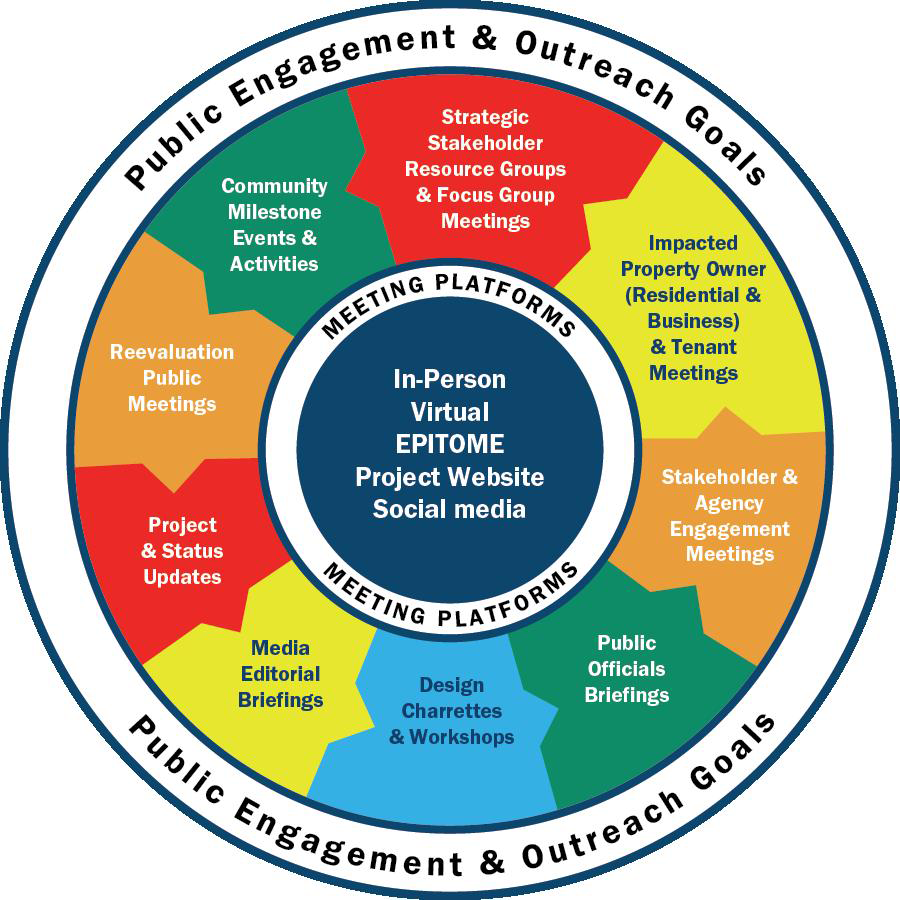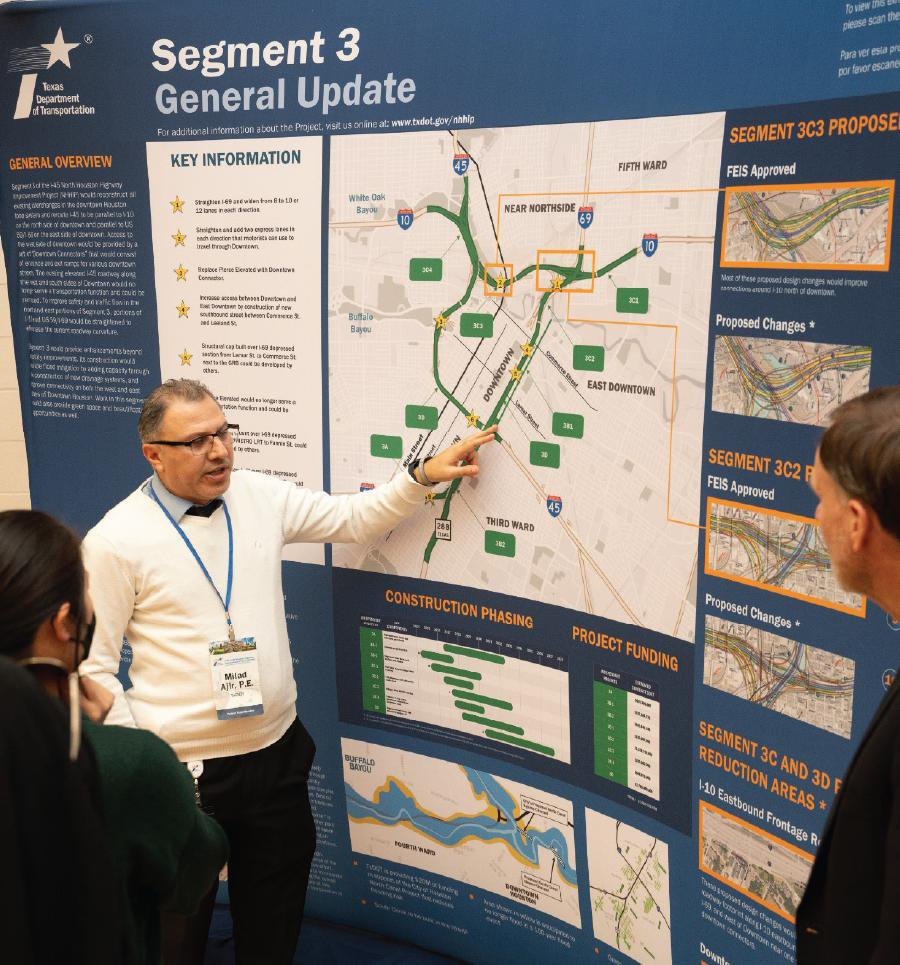Public engagement
Public engagement objectives
-
Transparent communication:
Foster open, two-way dialogue between the public and decision-makers by creating clear and accessible communication channels. -
Stakeholder engagement:
Gather input from all stakeholders, including residents, business owners, property owners, commuters, and community leaders, especially those directly impacted by the project. -
Clear information dissemination:
Share project details in a straightforward and understandable manner to empower the public to participate constructively in decision-making. -
Comprehensiveness:
Ensure a wide range of voices are heard, including representatives from traditionally marginalized communities, to create a fair and appropriate process. -
Collaboration and partnership:
Work with grassroots community groups, advocacy organizations, and other stakeholders to leverage their insights and build strong partnerships. -
Continuous improvement:
Seek feedback on the public involvement process to identify opportunities for enhancement and improve future engagement efforts.This strategic approach ensures public engagement is reasonable, transparent, and effective, building trust and fostering collaboration throughout the project’s development.
Strategic public engagement meeting opportunities
In response to requests from the City of Houston and Harris County, as outlined in Memorandums of Understanding (MOUs) with both entities, TxDOT is actively assessing ways to reduce the project footprint for Segments 1 and 2. These efforts aim to refine the right-of-way (ROW) needs compared to what was approved in the project’s Record of Decision (ROD). This initiative is also a key component of TxDOT’s Voluntary Resolution Agreement (VRA) with the Federal Highway Administration (FHWA), demonstrating TxDOT’s commitment to minimizing the project’s impact on surrounding communities. ”

Strategic stakeholder resource group meetings
To ensure effective collaboration and meaningful input, the I-45 NHHIP involves a series of targeted stakeholder resource group meetings, addressing key focus areas and engaging participants:
Standing & special call interagency coordination meetings:
Brings together representatives from TxDOT, the City of Houston (COH), Harris County, and METRO to align efforts and discuss interagency priorities.
Specialized stakeholder groups:
-
NHHIP housing & community focus group: Focused on addressing housing and community impacts associated with the project.
-
NHHIP traffic steering committee: Reviews traffic patterns and offers guidance on optimizing mobility.
-
Stakeholder engagement work group: Enhances collaboration with impacted stakeholders.
-
Strategic Communications work group: Develops communication strategies to inform and engage the public effectively.
-
Changing modes of transport work group: Explores and plans for shifts in transportation preferences and modes.
-
Traffic flow work group: Focused on improving traffic flow and mitigating congestion throughout the corridor.
Specialized programs and initiatives:
-
NHHIP enhanced relocation specialists: Dedicated to assisting displaced residents and businesses during the project.
-
NHHIP affordable housing grant program: Administered by the Texas State Affordable Housing Corporation (TSAHC) to support housing solutions for affected communities.
Regional collaboration:
-
Houston-Galveston Area Council (HGAC) Transportation Policy Council: Ensures regional policy alignment and coordination.
Community outreach meetings

Community outreach is central to the NHHIP’s public engagement efforts, involving a wide array of stakeholders to build consensus and foster inclusivity:
-
Elected officials and agency partners: Collaboration with local, regional, and state leaders.
-
Neighborhood homeowners associations and civic clubs: Engaging directly with local communities to address concerns and share updates.
-
City of Houston super neighborhoods: Targeted outreach to super neighborhood councils.
-
Economic development groups: Partnering with organizations to understand and mitigate project impacts on local businesses.
-
Tax Increment Reinvestment Zone (TIRZ) boards: Engaging TIRZ boards to discuss funding and project enhancements.
-
Management districts: Coordination with management districts to address localized concerns.
-
Other interested organizations and stakeholders: Ensuring inclusivity by inviting participation from other relevant groups.
This structured approach ensures that various perspectives are represented and that stakeholder and community input shape the development of the I-45 NHHIP.
